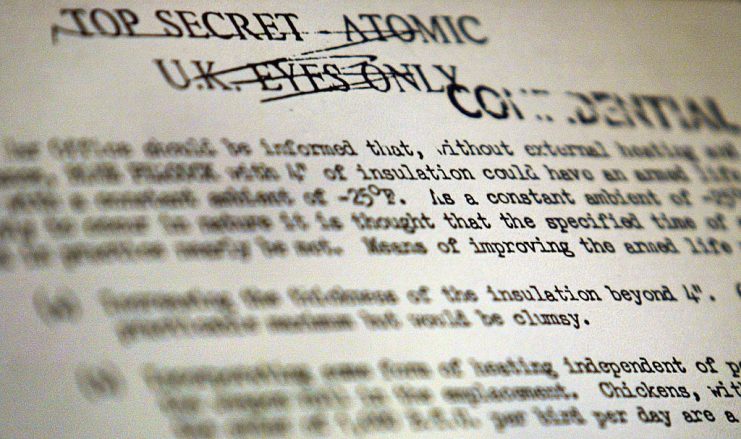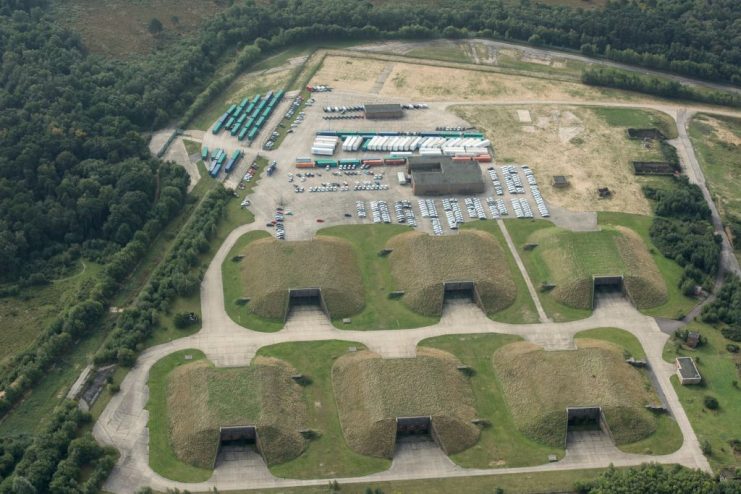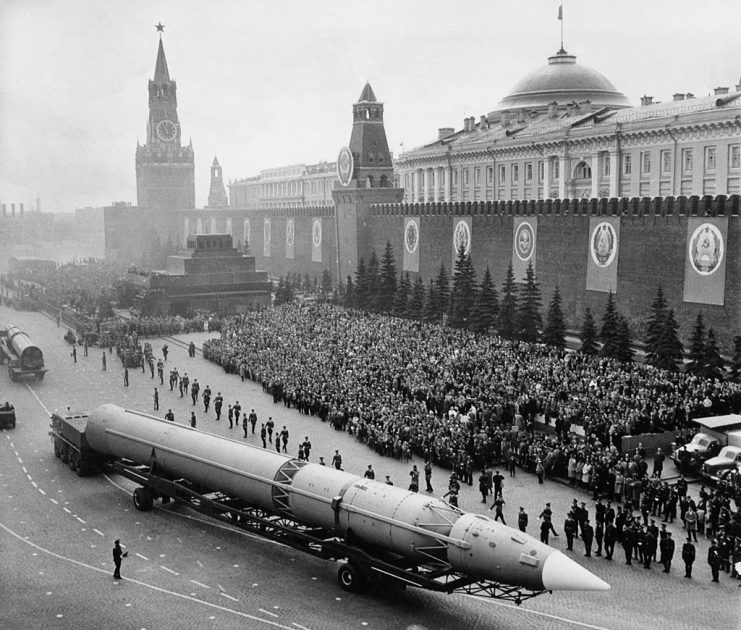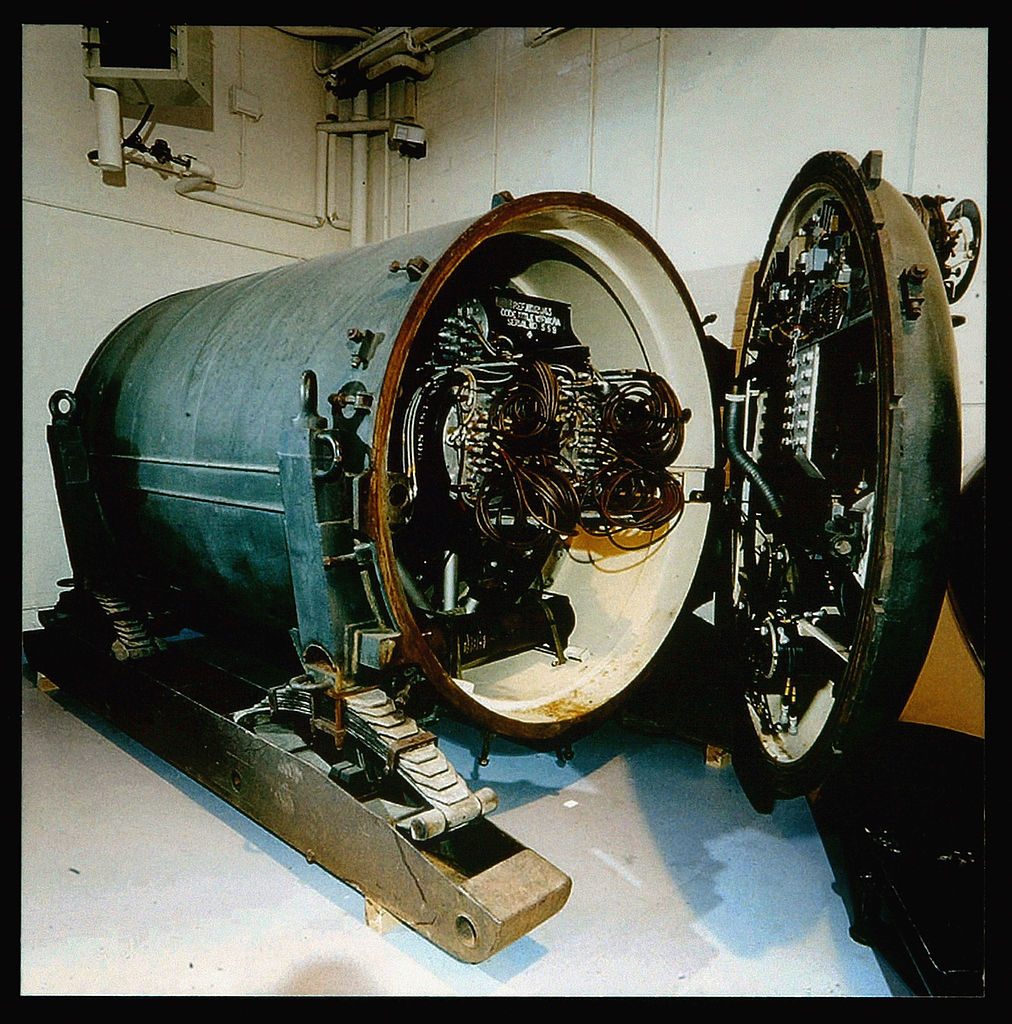Landmine: The Cold War was a tense time for Europeans, caught as they were between the military behemoths of the USSR and the USA.
Both superpowers lined their missiles up from the frozen North to the sunny South waiting for curtain-up in this theatre of war.
But the Russians and the Americans were not the only nuclear powers in the region. The French and the British were also players in the game and devised their own, home-grown deterrents to invasion by the Soviet threat.

The British had already made their name for warfighting engineering expertise in the Second World War with successful bouncing bombs and super-fast spitfire fighter planes.
The threats during the Cold War were entirely different.
Facing weapons of mass destruction and the vast military might of the USSR’s armed forces plucky Brits came up with a wide range of ideas that were designed to stop the enemy advance in its tracks.
One such design, codenamed Operation Blue Peacock, was a nuclear landmine. It was planned to be remotely triggered in order to inflict maximum damage on advancing Soviet forces.
One problem that the designers could not manage out easily was that the detonation could not occur if the device was too cold, and buried underground in Germany’s northern plains, maintaining a temperature at which the bombs’ electronics could be effective was difficult.

Even so, in July 1957 the British Army ordered ten nuclear landmines to be constructed and delivered to West Germany.
The story was that these were nuclear power units for use by the British military forces stationed in the country.
As the mines were to be left unattended, in the case of a retreat by British armed forces, there were anti-tamper devices built-in to the bombs.
The casings were pressurized, which meant that pressure and tilt switches could be incorporated. Once the weapon was armed it would be set off if moved, if the casing lost pressure or if it filled with water.
It was also designed to be detonated remotely by wire from a distance of up to three miles or by an eight-day timer.
While this would work when the electronics were at operating temperature, there was a very real risk that the harsh winters of the region could render the weapons useless.
Developers tried and tested many ways to keep the bomb electronics from freezing, ranging from wrapping the mines in insulating blankets to the use of live chickens, whose body heat would be enough to maintain the correct ambient temperature required.

The birds were expected to live for at least eight days inside the bomb, which was considered long enough in the event of invasion.
The chickens would be given enough grain and water to sustain them for the maximum window required for the timing mechanism should the full term be needed, before starving to death.
The bombs were said to deliver a ten-kiloton explosion that would result in a crater 375m wide and render a wide area out of bounds due to contamination, causing considerable impediment to an advancing Red Army.
Nevertheless, after the production of two prototypes the order was cancelled amid fears of creating unacceptable levels of fallout in the atmosphere so close to home.
There were also ethical and political issues concerned with the installation underground of nuclear warheads in allied territory and so, in 1958 the British Ministry of Defence cancelled the project.
Fast forward to 2004 and the documents relating to the nuclear landmine project were declassified. It is not known who was responsible, but the details of the chicken-powered bombs were released, quite appropriately, on April 1st.
However, a spokesperson confirmed that this was not an April Fool but had been a serious proposal, funded by the British government and developed by the Royal Armament Research and Development Establishment (RARDE).
Another Article From Us: WWII Fighter is Given Protected Status in the UK
Tom O’Leary, National Archive Head of Education and Interpretation said, ‘The Civil Service does not do jokes.’
